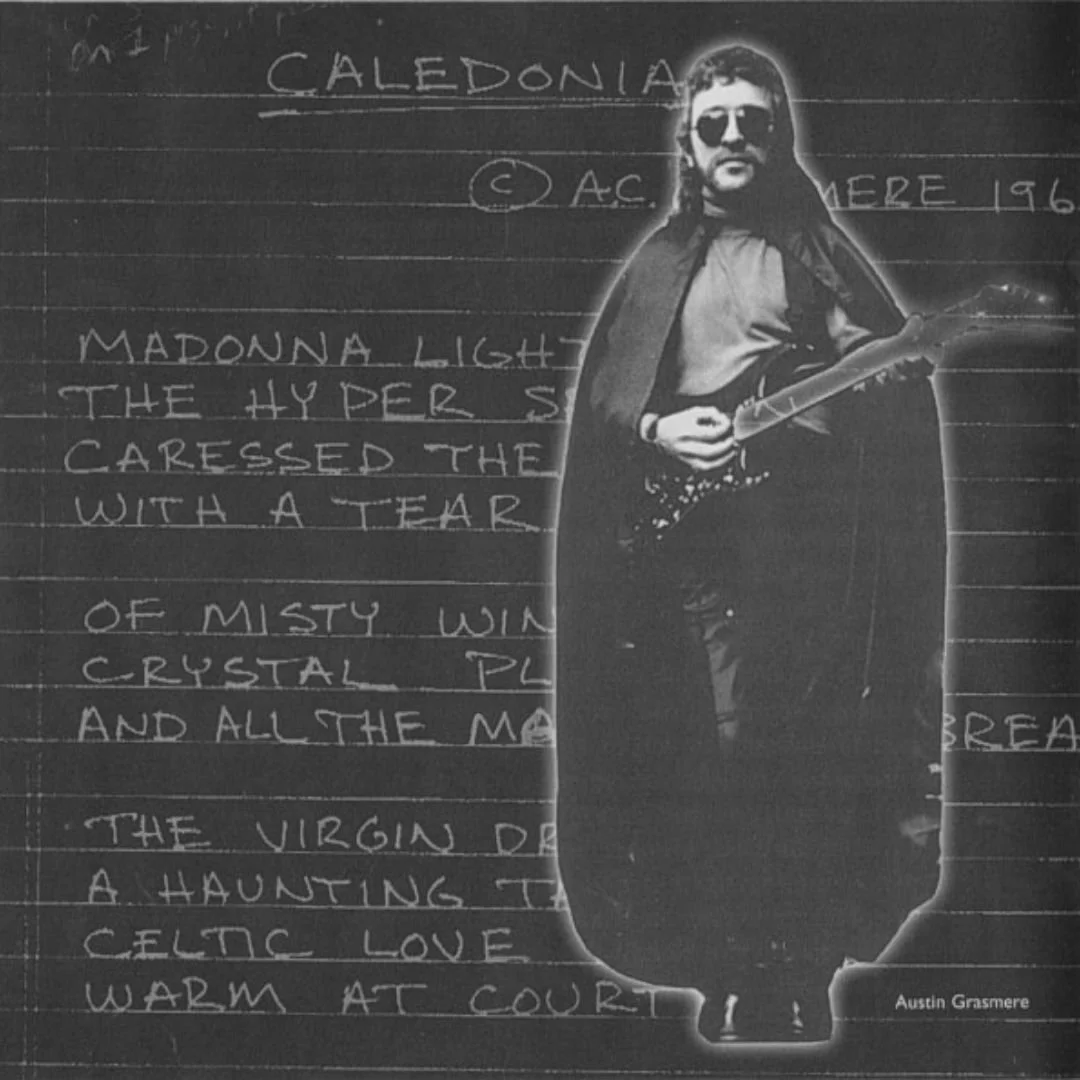A Rounded Square - The Tale of Cromagnon
So, Andre Breton, William S. Burroughs, the ghost of Abraham Lincoln, some guy wearing a strawberry pink ringer tee, carefully tucked into worn-out 501s, and Charles Manson walk into a bar… No, but for real. The New York-based creative consciousness known as Cromagnon, the disembodied brain child of Austin Grasmere and Brian Elliot, whose life was taken too soon in a fatal car crash in the years to come, is exactly what the hippie generation in America felt on a molecular level during the nuclear fallout of government, society and the cultural crises that would soon follow. No matter what angle or viewpoint you gaze into the past portal, most would agree that the youth was in serious trouble, and the alchemy art was sincere in their survival. Through cerebral conversation, and liberating language, founding members Austin Grasmere and Brian Elliot, alongside the Connecticut Tribe: Mark Payuk, the Bennett brothers, Salvador Salgado, whose melodic mug graces the cover, Vinnie Howley, Nelle Tresselt, and Gary Leslie, got together in A1 Sound Studio, New York City, for three days in 1969, with the blessing of the great Bernard Stollman, founder of ESP Disk’, to carefully capture their lysergic legend in all its galactic glory. A spellbound effort that is as radical as Coltrane, and as poetically provoking as Sun Ra, Cromagnon was the byproduct of free expression and iconic intensity. Waving its merciless hand, whose fingers are worn down from digital deterioration, across lands far and wide, its message was a meticulous meditation that had to come out sometime. Having met Stollman at Riverside Park, on Manhattan’s upper West Side, in the fall of 1968, who asked, “What would be your theme?” The duo’s message was simple: “Everything is one.” With immediate encouragement to effortlessly enter the esoteric ecosystem of human expression, Stollman replied, “Go do it!” and the collective did just that. Exploring the endless vertebrae of volume and the volcanic reaction to short-circuiting in the afterlife, the group punched through the celebration of life, leaving behind a sonic silhouette of two skeletons connecting in a cosmic embrace before wrapping production, and like most outfits of their generation, faded into the melodic memory of space, and time.
“The original concept of the album was to progress from different decades of music. Like, in ‘59, Elvis was shaking his pelvis and driving people — well, women — crazy. And adults as well, making them very upset. And then ten years later, Hendrix was pouring lighter fluid on his guitar and getting a lot of great distortion out of his Marshall amps. And The Who was breaking up equipment. And then we were trying to carry it on to the next decade. We were going to say, maybe in 1979, there’ll be a group of people on stage that’ll be blowing through reeds of grass while someone is reciting some poetry, and another person is squirting water at a microphone on stage with a hose…”
Even for ESP Disk’, the group’s lone masterpiece, “Orgasm/Cave Rock,” is still, to this day, one of the catalog’s most celebrated and highly regarded pieces in its cosmic collection. Is it possible to imagine Cromagnon sharing the same bill as the Grateful Dead, or peak Doors in 1968? Were they too weird for even the hippies, and their more rock and roll-focused rituals? What was the likelihood that anyone even heard the album upon its release and full color reissue in 1973? It’s more likely that the paranormal community of the underworld picked up on the group’s wavelength way before a bunch of deranged, pot-smoking teenagers bought a copy, took it home, and listened to it at a respectable volume to ensure the adults in the other room didn’t hear the spiritual sacrifice through the speakers, and dispose of its remains properly. But where did this band ultimately ‘fit in’ to the sophisticated subconscious of human expression? While Manson roamed free on the other side of the country, a timeline shared by Pharoah Sanders, Allen Ginsberg, and a still-reclusive Bob Dylan made the remainder of the decade feel exciting, rare, and iconically inspiring, Cromagnon came, and went, leaving behind perhaps one of the most radical relics of its time. An absolute anarchic reaction to the lobotomy being handed out like trick-or-treat candy to American culture, Grasmere and Elliot bravely walked into the mysteries of life carrying only a dream and a vision to make something different. You can argue all day on the definition of success, but anyone who can execute a vibrant vision such as theirs with such tenacity and trickery sounds like a million bucks to me.




